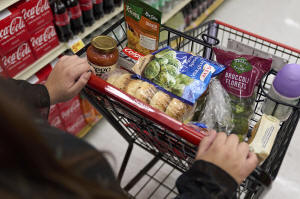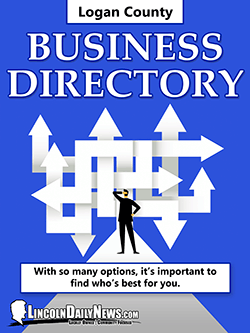Trump officials want to ban junk food from SNAP. Past efforts show it's
not easy to do
 Send a link to a friend
Send a link to a friend
 [February 20, 2025]
By JONEL ALECCIA [February 20, 2025]
By JONEL ALECCIA
A push to ban sugary drinks, candy and more from the U.S. program that
helps low-income families pay for nutritious food has been tried before
— but it may soon get a boost from new Trump administration officials.
Robert F. Kennedy Jr., the newly confirmed health and human services
secretary, and Brooke Rollins, the new agriculture secretary, have both
signaled that they favor stripping such treats from SNAP, the
Supplemental Nutrition Assistance Program.
Kennedy has been most vocal, calling for the government to stop allowing
the nearly $113 billion program that serves about 42 million Americans
to use benefits to pay for “ soda or processed foods.”
“The one place that I would say that we need to really change policy is
the SNAP program and food stamps and in school lunches,” Kennedy told
Fox News host Laura Ingraham last week. “There, the federal government
in many cases is paying for it. And we shouldn't be subsidizing people
to eat poison.”
In one of her first interviews after being confirmed, Rollins said she
looked forward to working with Kennedy on the issue.
“When a taxpayer is putting money into SNAP, are they OK with us using
their tax dollars to feed really bad food and sugary drinks to children
who perhaps need something more nutritious?” Rollins said. “These are
all massive questions we're going to be asking and working on in the
coming months and years.”

But removing certain foods from SNAP — known for years as food stamps —
isn't as simple as it sounds.
The program is run by the USDA, not HHS, and is administered through
individual states. It is authorized by the federal Food and Nutrition
Act of 2008, which says SNAP benefits can be used for “any food or food
product intended for human consumption,” except alcohol, tobacco and hot
foods, including those prepared for immediate consumption.
Excluding any foods would require Congress to change the law — or for
states to get waivers that would let them restrict purchases, said Katie
Bergh, a senior policy analyst for the Center on Budget and Policy
Priorities, a nonpartisan research group. Over the past 20 years,
lawmakers in several states have proposed stopping SNAP from paying for
bottled water, soda, chips, ice cream, decorated cakes and “luxury
meats” like steak.
“None of those requests have ever been approved under either Republican
or Democratic presidents,” Bergh said.
In the past, Agriculture Department officials rejected the waivers,
saying in a 2007 paper that no clear standards exist to define foods “as
good or bad, or healthy or not healthy.” In addition, the agency said
restrictions would be difficult to implement, complicated and costly.
And they might not change recipients' food purchases or reduce
conditions such as obesity.
Anti-hunger advocates point to research that shows SNAP recipients are
no more likely than other low-income Americans to buy sugary drinks or
snack foods. And they say that limiting food choices undermines the
autonomy and dignity of people who receive, on average, about $187 per
month — or about $6.16 per day, according to latest figures.
[to top of second column]
|

Jaqueline Benitez, who depends on California's SNAP benefits to help
pay for food, shops for groceries at a supermarket in Bellflower,
Calif., on Feb. 13, 2023. (AP Photo/Allison Dinner, File)

“This is just another way to cut benefits,” said Gina Plata-Nino, a
deputy director at the Food Research and Action Center, a nonprofit
advocacy group. “It's like, how do we restrict people more? How do
we stigmatize them more?”
Bills are pending in Congress and in several states to restrict SNAP
benefits from paying for soda, candy and other items.
Rep. Josh Breechan, an Oklahoma Republican, sponsored the Healthy
SNAP Act.
“If someone wants to buy junk food on their own dime, that’s up to
them,” he said. “But what we’re saying is, ‘Don’t ask the taxpayer
to pay for it and then also expect the taxpayer to pick up the tab
for the resulting health consequences.’”
One SNAP recipient said she uses her monthly $291 benefit to buy
necessities such as meat, oil, milk and coffee. Martina Santos, 66,
of New York City, supplements those foods with fresh vegetables and
fruits from a pantry run by the West Side Campaign Against Hunger,
where she's also a volunteer. Because she has diabetes and other
health conditions, she said she understands the importance of using
the benefits only for nutritious options.
“For me, SNAP is to be used toward healthy food to get people to
avoid all the disease they’re having around right now: obesity,
diabetes, high blood pressure,” Santos said.
In Kansas and elsewhere, bills that would ban soft drinks and candy
highlight some of the challenges of such changes.
Several pending bills seek to keep SNAP from paying for soft drinks,
but they would continue to allow drinks containing milk, milk
alternatives like soy or almond milk, or drinks with more than 50%
vegetable or fruit juice. Candy is characterized as any
unrefrigerated, flourless preparation of “sugar, honey or other
natural or artificial sweeteners in combination with chocolate,
fruits, nuts or other ingredients or flavorings in the form of bars,
drops or pieces.”
By that definition, Kit Kat and Twix bars, which contain flour,
wouldn't be banned. And juices that contain high amounts of sugar,
but are more than half fruit juice by volume, would be allowed.
Such conundrums have stymied changes to the SNAP program for
decades. But this moment could be different, said Dr. Anand Parekh,
chief medical officer of the Bipartisan Policy Center, a think tank
based in Washington, D.C.
The momentum behind Kennedy's “Make America Healthy Again” movement
could spur a new focus on solutions to poor diets that account for
leading risk factors for early disease and death.

“When we talk about the SNAP program, we have to remind people that
the ‘N’ stands for nutrition,” Parekh said. “It's about time that
both parties can come together and see what are the innovations here
to improve diet quality and nutrition.”
___
Associated Press video journalist Mary Conlon contributed to this
report.
All contents © copyright 2025 Associated Press. All rights reserved |